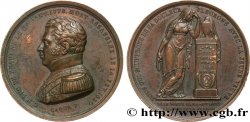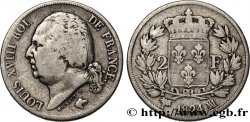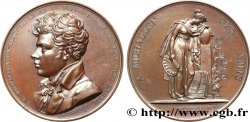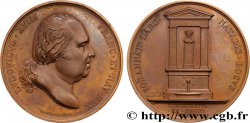E-auction 287-207462 - fme_508165 - LOUIS XVIII Médaille de restauration du trône d’Espagne
Чтобы принять участие в торгах, вы должны войти в систему и стать подтвержденным участником аукциона. Войдите, чтобы сделать ставку. Ваш аккаунт будет подтвержден в течение 48 часов. Не ждите до закрытия торгов, чтобы зарегистрироваться.Сделав ставку на данный товар, вы вступаете в юридическое соглашение на покупку выбранного товара и нажатием кнопки «Сделать ставку» подтверждаете принятие вами условий интернет-аукционов cgb.fr.
Ставка может бить сделана только в полном эквиваленте евро. Торги закроются согласно времени, указанному в описании товара, все ставки, сделанные после закрытия торгов, учитываться не будут. Не следует откладывать предложение вашей ставки до последнего момента, так как система может не успеть обработать вашу заявку, и ваша ставка не будет принята. Более детальную информацию вы найдёте здесь: FAQ по интернет-аукционам.
БЕСПЛАТНО.
БЕСПЛАТНО.
| Оценить : | 120 € |
| Цена : | 62 € |
| Максимальная предлагаемая цена : | 77 € |
| Конец торгов : | 15 October 2018 18:50:30 |
| Участников : | 7 Участников |
Тип Médaille de restauration du trône d’Espagne
Дата: 1823
Монетный двор / Город: Espagne
Металл: copper
Диаметр: 50,5 mm
Ориентация осей монеты: 12 h.
Гравер GAYRARD Raymond (1777-1858)
Вес: 64,23 g.
Век: lisse
Пуансон: sans poinçon
Комментарии о состоянии
Patine marron hétérogène. Traces de manipulation dans les champs. Présence de coups et rayures
Ссылки в каталоге: :
Лицевая сторона
Аверс: легенда: LVDOVICVS. XVIII. FRANC. ET. NAV. REX..
Аверс: описание: Tête de Louis XVIII à droite, signé : GAYRARD F..
Обратная сторона
Реверс: легенда: ARMIS GALLIAE - VIRTUTE - DUCIS // A FURORE REBELLIONIS / HISPANIA LIBERATA.
Реверс: Описание: Guerrier debout vêtu à l'antique brandissant le glaive, le bouclier timbré de trois lys, repoussant l'ennemi vers la mer ; à gauche, l'Espagne assise retenant deux enfants, à ses pieds un bouclier timbré aux armes de Castille et de Léon. Signé : GAYRARD F..
Комментарий
Médaille signe GAYRARD F. Paul Joseph Raymond Gayrard, dit Raymond Gayrard, né le 3 septembre 1807 à Clermont-Ferrand (Puy-de-Dôme) et mort en 1855 à Enghien-les-Bains (Val-d'Oise), est un sculpteur et graveur-médailleur français.
Raymond Gayrard étudie à un âge précoce avec son père Raymond Gayrard, sculpteur-graveur, (Rodez, 25 octobre 1777-1858)1. Il est l'élève de François Rude et David d'Angers. Il expose au salon de Paris en 1827 et poursuit ses expositions sa vie durant. En 1834 il obtient la deuxième place au concours et la médaille de première classe en 1846 et 1848. Il expose pour la dernière fois en 1855. Apprécié de la haute société française, il exécute beaucoup de bustes de personnalités contemporaines. Il est est également sculpteur animalier.
La restauration absolutiste en Espagne est la période de l'histoire d'Espagne s'étendant entre 1814 et 1833, au cours de laquelle le pays connaît un rétablissement de la monarchie absolue des Bourbons.
Après la guerre d'indépendance contre l'occupant français, les Cortès se réunissent à Madrid en octobre 1813. Peu après, Napoléon reconnaît Ferdinand VII comme roi d'Espagne par le traité de Valençay. Fort du soutien de la majeure partie de la population espagnole, celui-ci rentre dans sa capitale, le 22 mars 1814, par le chemin de Valence. Il reçoit alors, de la main d'un groupe de fidèles de la monarchie, le manifeste des Perses, une déclaration favorable à une restauration absolutiste.
Début 1823, la Sainte Alliance décide d'intervenir en Espagne, ainsi qu'elle l'a déjà fait à Naples et au Piémont. Le 22 janvier un traité secret est signé qui permet à la France d'envahir l'Espagne pour rétablir Ferdinand VII en monarque absolu.
.
Raymond Gayrard étudie à un âge précoce avec son père Raymond Gayrard, sculpteur-graveur, (Rodez, 25 octobre 1777-1858)1. Il est l'élève de François Rude et David d'Angers. Il expose au salon de Paris en 1827 et poursuit ses expositions sa vie durant. En 1834 il obtient la deuxième place au concours et la médaille de première classe en 1846 et 1848. Il expose pour la dernière fois en 1855. Apprécié de la haute société française, il exécute beaucoup de bustes de personnalités contemporaines. Il est est également sculpteur animalier.
La restauration absolutiste en Espagne est la période de l'histoire d'Espagne s'étendant entre 1814 et 1833, au cours de laquelle le pays connaît un rétablissement de la monarchie absolue des Bourbons.
Après la guerre d'indépendance contre l'occupant français, les Cortès se réunissent à Madrid en octobre 1813. Peu après, Napoléon reconnaît Ferdinand VII comme roi d'Espagne par le traité de Valençay. Fort du soutien de la majeure partie de la population espagnole, celui-ci rentre dans sa capitale, le 22 mars 1814, par le chemin de Valence. Il reçoit alors, de la main d'un groupe de fidèles de la monarchie, le manifeste des Perses, une déclaration favorable à une restauration absolutiste.
Début 1823, la Sainte Alliance décide d'intervenir en Espagne, ainsi qu'elle l'a déjà fait à Naples et au Piémont. Le 22 janvier un traité secret est signé qui permet à la France d'envahir l'Espagne pour rétablir Ferdinand VII en monarque absolu.
.








 Cообщить об ошибке
Cообщить об ошибке Распечатать страницу
Распечатать страницу Отправить мой выбор
Отправить мой выбор Задать вопрос
Задать вопрос Consign / sell
Consign / sell
 Информация
Информация



